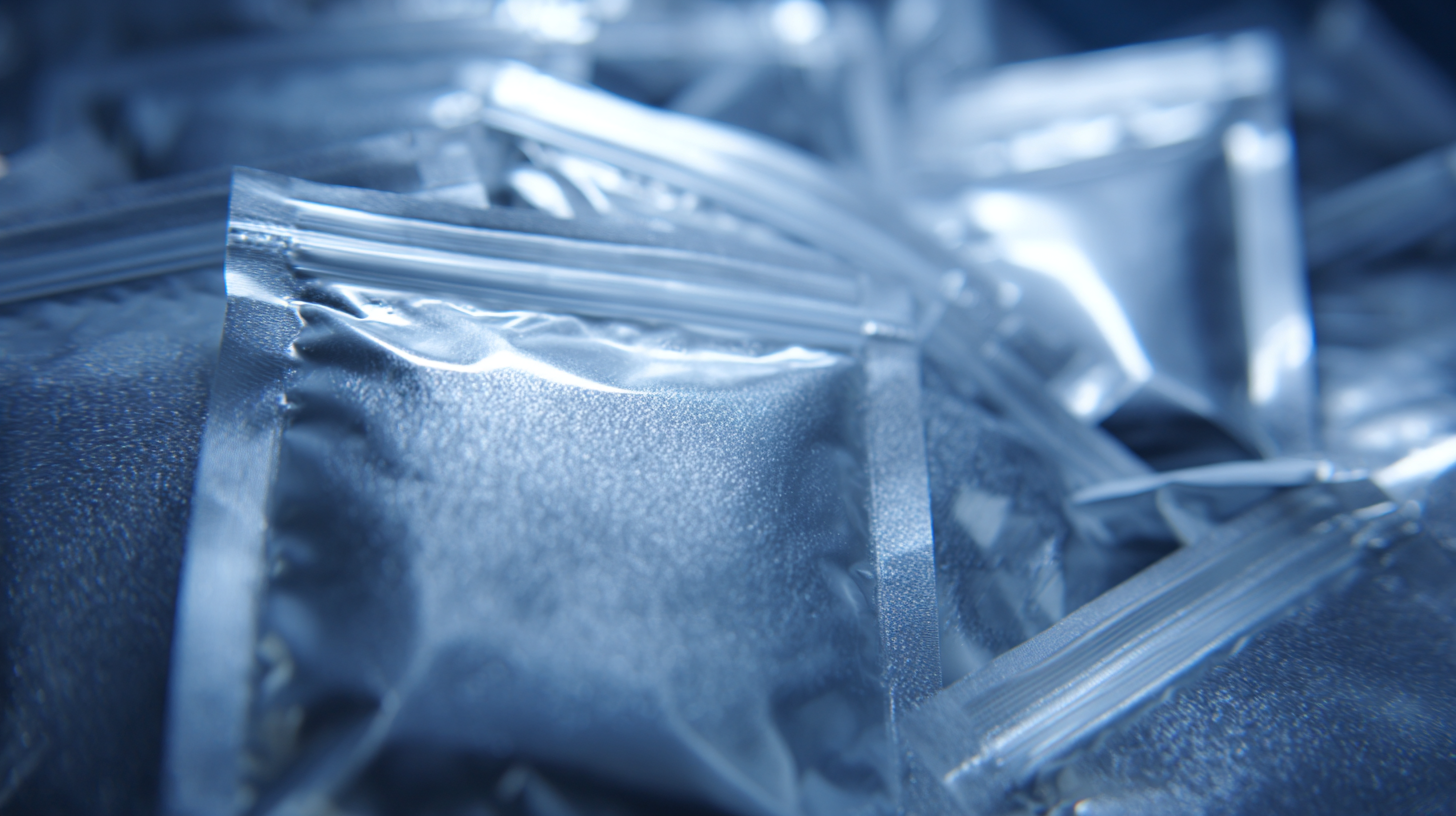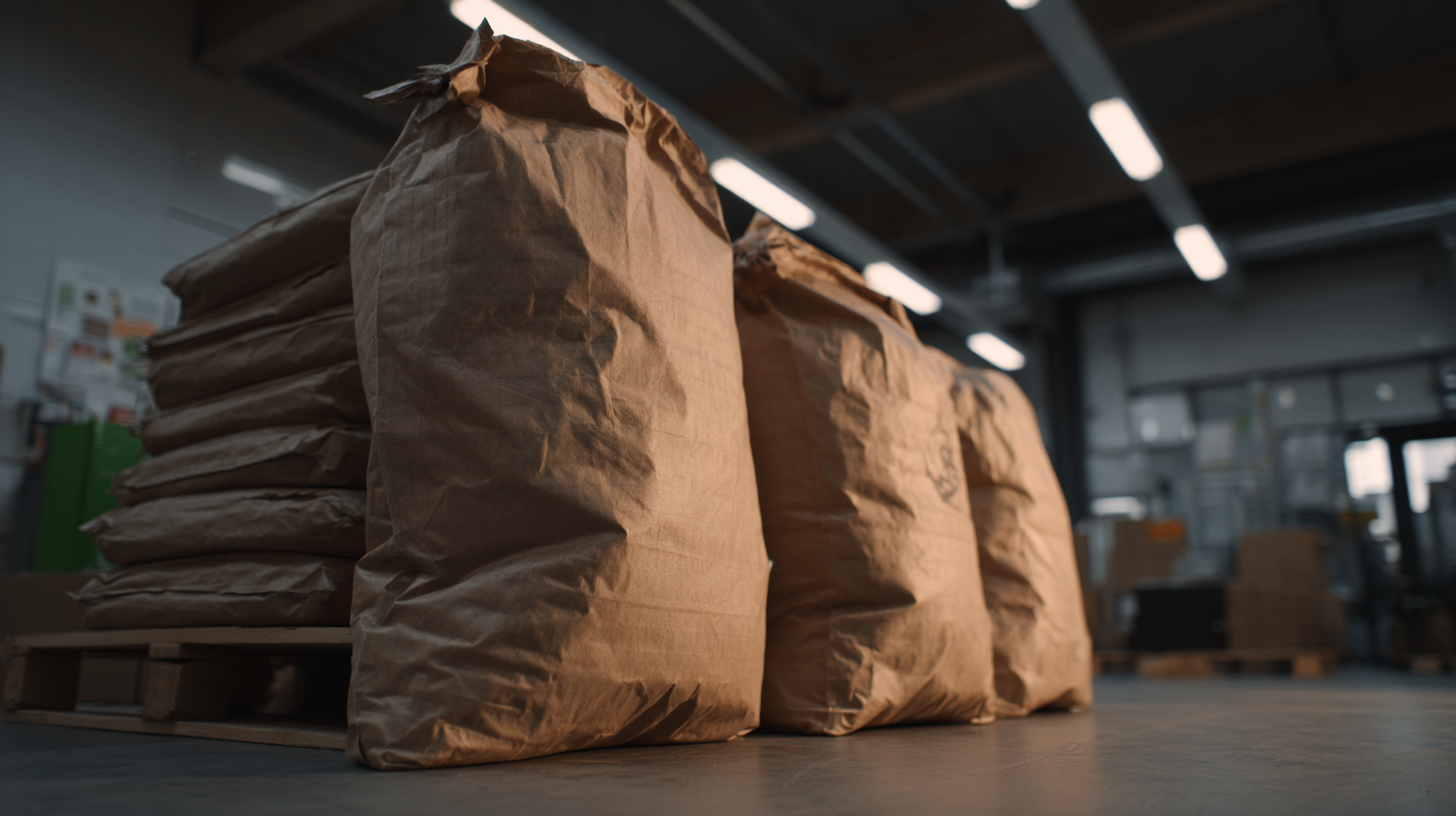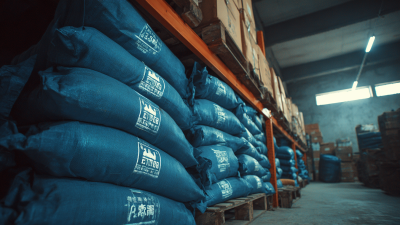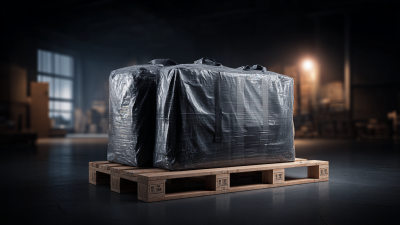 +86 178 5514 5298
+86 178 5514 5298
Leave Your Message
-
 CONTACT NUMBER
CONTACT NUMBER -
 CONTACT NUMBER
CONTACT NUMBER -
 CONTACT NUMBER
CONTACT NUMBER



In the ever-evolving landscape of packaging solutions, the introduction of the 95 kPa Bag marks a significant milestone in efficient and sustainable practices. Designed to withstand higher pressures while minimizing material use, the 95 kPa Bag offers a revolutionary approach to addressing the demands of modern industries. This innovative packaging solution not only enhances product protection and shelf-life but also contributes to reducing environmental impact through reduced waste generation. As companies strive to balance functionality with sustainability, the 95 kPa Bag stands out as a transformative option that meets these needs, promising to redefine packaging standards. By exploring its composition, applications, and benefits, we can better understand how the 95 kPa Bag is poised to unleash a new era in packaging efficiency, steering industries toward smarter and more responsible choices.

The advent of 95 kPa bags marks a transformative leap in the field of packaging solutions, particularly in sectors requiring high durability and efficiency. According to a recent report by Smithers Pira, the global flexible packaging market is projected to reach USD 300 billion by 2025, driven by innovations such as these high-performance bags. The 95 kPa vacuum technology enhances the preservation of perishable goods, extends shelf life, and minimizes food waste—a critical consideration as the food and beverage industry grapples with losses exceeding USD 1 trillion annually due to spoilage.
Moreover, the lightweight yet robust construction of 95 kPa bags contributes significantly to sustainability goals. Research from the Sustainable Packaging Coalition indicates that lighter packaging results in lower transportation emissions. By reducing material consumption and enhancing recycling capabilities, these bags exemplify a forward-thinking approach to environmentally conscious packaging. As businesses increasingly align with sustainability initiatives, the adoption of 95 kPa bags can serve as a pivotal strategy to enhance operational efficiency while meeting consumer demand for eco-friendly products.

The advent of 95 kPa bags marks a significant advancement in packaging technology, particularly in extending the shelf life of perishable products. These specialized bags are designed to maintain a controlled atmosphere, effectively reducing the oxygen levels inside the package. By minimizing oxygen exposure, the growth of aerobic bacteria and mold is inhibited, allowing products, such as fruits, vegetables, and meats, to retain their freshness for extended periods.
Moreover, 95 kPa bags are engineered to optimize moisture retention while preventing excess humidity from compromising the product quality. This balance is crucial for items that are sensitive to dehydration, ensuring they remain appealing and nutritious for consumers. As businesses increasingly prioritize sustainability, the efficiency of 95 kPa bags provides a dual benefit: not only do they reduce food waste by keeping products fresh longer, but they also lessen the need for preservatives and other chemical additives, promoting a more natural offering.
| Product Type | Initial Shelf Life (Days) | Shelf Life with 95 kPa Bags (Days) | Shelf Life Extension (%) | Temperature Range (°C) |
|---|---|---|---|---|
| Fresh Vegetables | 7 | 14 | 100% | 0 to 4 |
| Meat Products | 5 | 10 | 100% | -1 to 4 |
| Dairy Products | 14 | 21 | 50% | 0 to 4 |
| Bakery Goods | 3 | 6 | 100% | 18 to 24 |
| Fruits | 10 | 20 | 100% | 0 to 10 |
The introduction of 95 kPa bags marks a significant advancement in the realm of sustainable packaging solutions. Designed with eco-friendliness at their core, these bags not only meet the rigorous demands of modern consumers but also contribute to reducing environmental impact. Made from recyclable materials, 95 kPa bags offer a greener alternative to traditional packaging options, lessening reliance on single-use plastics and decreasing overall waste.
Furthermore, the efficient design of these bags ensures that they utilize less material while providing optimal strength and durability. This reduction in material usage translates directly into lower carbon footprints throughout the production and distribution processes. By embracing 95 kPa packaging, businesses can demonstrate their commitment to sustainability, appealing to environmentally conscious consumers and fostering a brand image rooted in social responsibility. As industries shift towards more sustainable practices, 95 kPa bags represent a pivotal step forward in creating a cleaner, greener future.
This chart illustrates the environmental impact of using 95 kPa packaging compared to traditional packaging solutions. The data reflects reductions in carbon emissions, waste generation, and resource consumption associated with this innovative packaging technology.
 The emergence of 95 kPa bags marks a significant advancement in the world of packaging solutions, particularly when it comes to cost-effective shipping. These innovative bags allow businesses to reduce both the volume and weight of their shipments, translating into substantial savings on transportation costs. By using lighter packaging, companies can ship more products in a single load, minimizing fuel consumption and lowering their carbon footprint.
The emergence of 95 kPa bags marks a significant advancement in the world of packaging solutions, particularly when it comes to cost-effective shipping. These innovative bags allow businesses to reduce both the volume and weight of their shipments, translating into substantial savings on transportation costs. By using lighter packaging, companies can ship more products in a single load, minimizing fuel consumption and lowering their carbon footprint.
When integrating 95 kPa bags into your shipping strategy, consider these tips: First, evaluate the size and shape of your products to ensure optimal bag selection, maximizing the space and reducing potential voids. Additionally, invest in a quality sealant to enhance the durability of the bags, as proper sealing prevents leaks and maintains product integrity during transit. Lastly, train your staff on the best handling practices for these bags to avoid damage and ensure they maintain their low-pressure features throughout the shipping process.
Adopting 95 kPa bags not only contributes to lower shipping rates but also supports sustainable practices. As businesses look for ways to enhance their supply chain efficiency, these bags present a viable solution that balances cost savings with environmental responsibility. By rethinking packaging strategies, companies can leverage the benefits of 95 kPa bags to create a more efficient and eco-friendly shipping process.
The introduction of 95 kPa packaging solutions marks a significant advancement in efficient and versatile packaging applications. With their superior pressure handling capabilities, these bags are ideal for safely transporting Category B samples, which often require stringent compliance with international regulations. The incorporation of ultra-absorbent linings and tube separation not only enhances safety but also facilitates the swift and secure movement of potentially hazardous materials. This innovation is particularly crucial in the context of shipping biological samples, including those related to COVID-19, where adherence to Dangerous Goods Regulations is essential.
Moreover, the 95 kPa bags can be leveraged across various industries beyond the medical field. In food packaging, for instance, the review of heat seal materials highlights the necessity for optimized selections to enhance product integrity. The flexibility and durability provided by these bags make them suitable for protecting perishable goods while ensuring compliance with stringent safety standards. As packaging technology continues to evolve, the multifunctional nature of 95 kPa solutions positions them as a cornerstone for modern packaging needs, bridging performance and compliance seamlessly.






